|
Location:
Portalegre, North of Crato, Alentejo. |
Grid Reference:
39� 14' 00'' N, 7� 40' 00'' W. |

 Anta do Tapad�o:
(Passage Mound).
Anta do Tapad�o:
(Passage Mound).
One of the most beautiful passage mounds in Portugal.
This 'Anta' is estimated at around 3,000 BC
Another jewel in Portugal's megalithic crown.
A must for all lovers of megaliths.
(Click
here for map of the site)
|
Anta
de Tapad�o:
('Anta da aldeia da mata') |
This
seemingly insignificant 'Dolmen'
appears like so many others from outside, until the point one enters it,
when any illusion of it being a Dolmen is dispersed, as it becomes
immediately obvious that only the top half of the stones are showing from
outside and that the bottom half are actually buried within a mound of
considerable size.
Note - Whether this was the original shape of the structure
is unsure at present - watch this space.
The Anta do Tapadao is situated in a field with a 360 �
view that stretches to the horizon in almost every direction. It is
accessible by passing through a closed gate and is to be found in a field
(on private land), shared by herds of moody cows. It is believed to have
been constructed around 3000 BC.
The passage:
The passage is composed of huge,
smoothed granite stones, each roughly 2m long and has a slight curve at the
outside end. It is approximately 10m long and only 1m high, and when covered
over would have required anyone wanting to enter the chamber to crawl along
its length. The floor of the passage is covered in rubble, possibly remnants
of a pavement or debris from collapsed roof-stones.
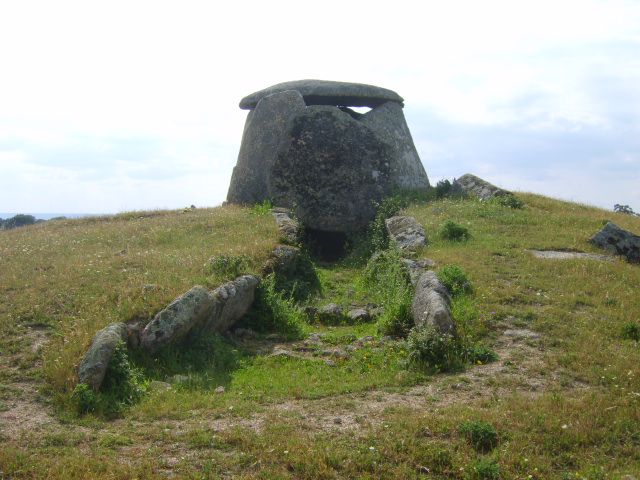
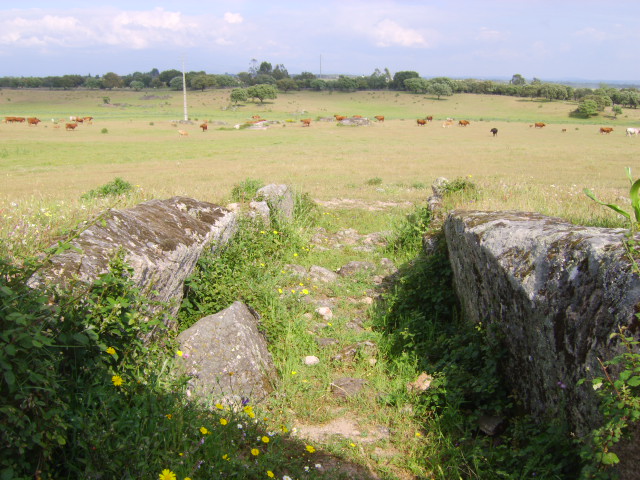
The Chamber:
The chamber is composed of eight huge
granite stones, capped-off with a stone flattened on the underside and
rounded on top. The large size of the chamber (second only to
Zambujeiro), leaves no doubt as to the
original importance of this passage mound.
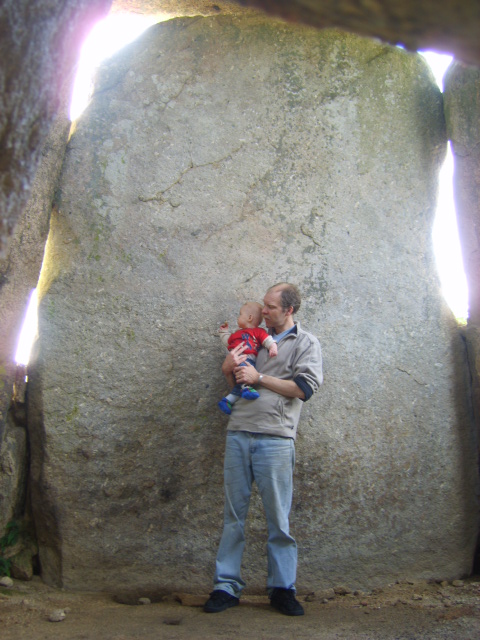
The stones are all roughly 4m
high (over ground level), and the stone at the rear is the largest at around 4m high x 3m wide and
1/2 thick (4 x 3 x 1/2 = 6m�). There are no visible markings inside the
chamber.
One of the stones has been broken in half at
ground-level, and lies on the ground outside, where it fell.
The large stone above the
entrance has slipped on the right hand side, and can be seen to have been
worked along its bottom edge so as to fit neatly over the last two stones of
the passage (see below). From inside the chamber, it is possible to determine the reason
for the movement, as the supporting stone on the right hand side can be seen
to have broken.
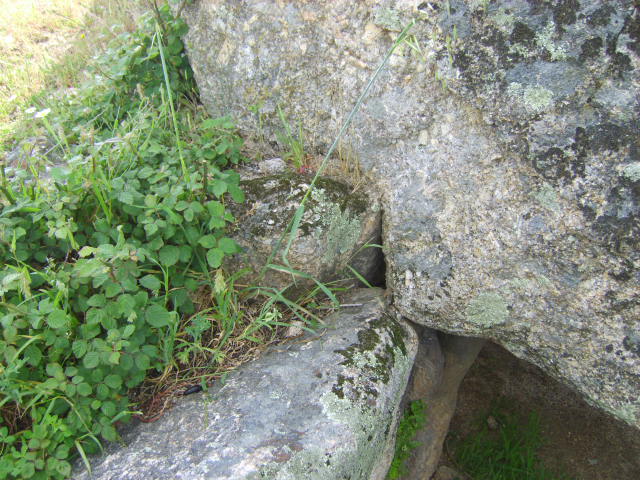
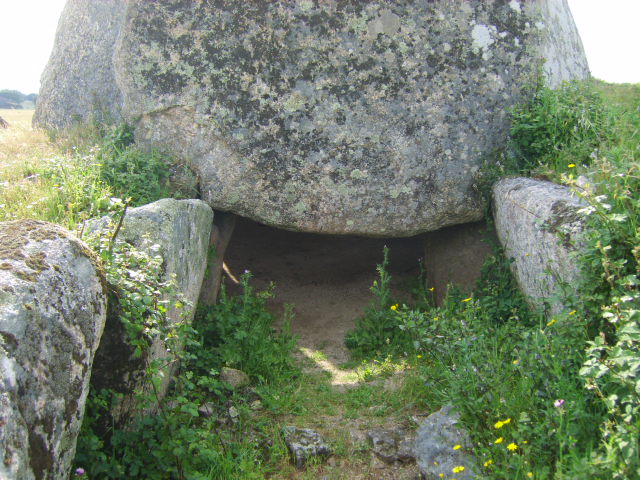
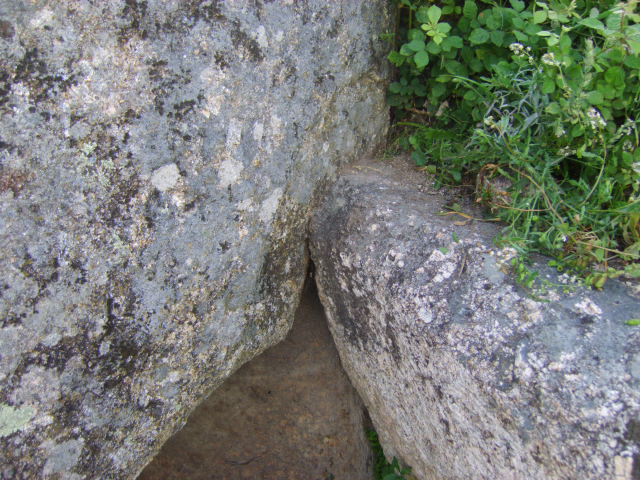
The entrance stone was deliberately shaped to rest
above the passage.
The
Drag�o de St. Miguel:
Directly north of the mound
is a rock formation which, with a little imagination, looks like a Dragons
head. Whether or not this feature was one of the reasons why the Anta was
located here is unknown, but it certainly contributes to the already magical
atmosphere of the site.
Orientation:
The passage leads from the mound at roughly 15�
south of true west, directing it towards the rising winter solstice sun
or along the azimuth of the spring full moon
(a feature shared by the other two Alentejo passage mounds,
Zambujeiro and
San Gens). The passage has a distinct curve in it reminiscent of the
passage at Newgrange, where it is now
recognised as a deliberate design, restricting the entry of sunlight into
the chamber for just a few hours of the day on the Solstice. There are
several prominent rocky outcrops several metres away in the field in front
of the passage, but they appear to have no markings on them.
'The Watcher' of Tapadao:
At the other end of the Stone outcrop that forms the dragon, is the
following stone feature. It faces the dolmen and has presumably watched over
it since its construction. Perhaps another reason why the dolmen was sited
at this location.
Note the similarity to a serpents
head above the face.
Even today these rock-features lend their presence to the
atmosphere of the site.
(Other 'faces in stones' - Simulacrum)
(Other Passage Mounds)
(List of Prehistoric Portuguese sites)
(Portugal Homepage)
|